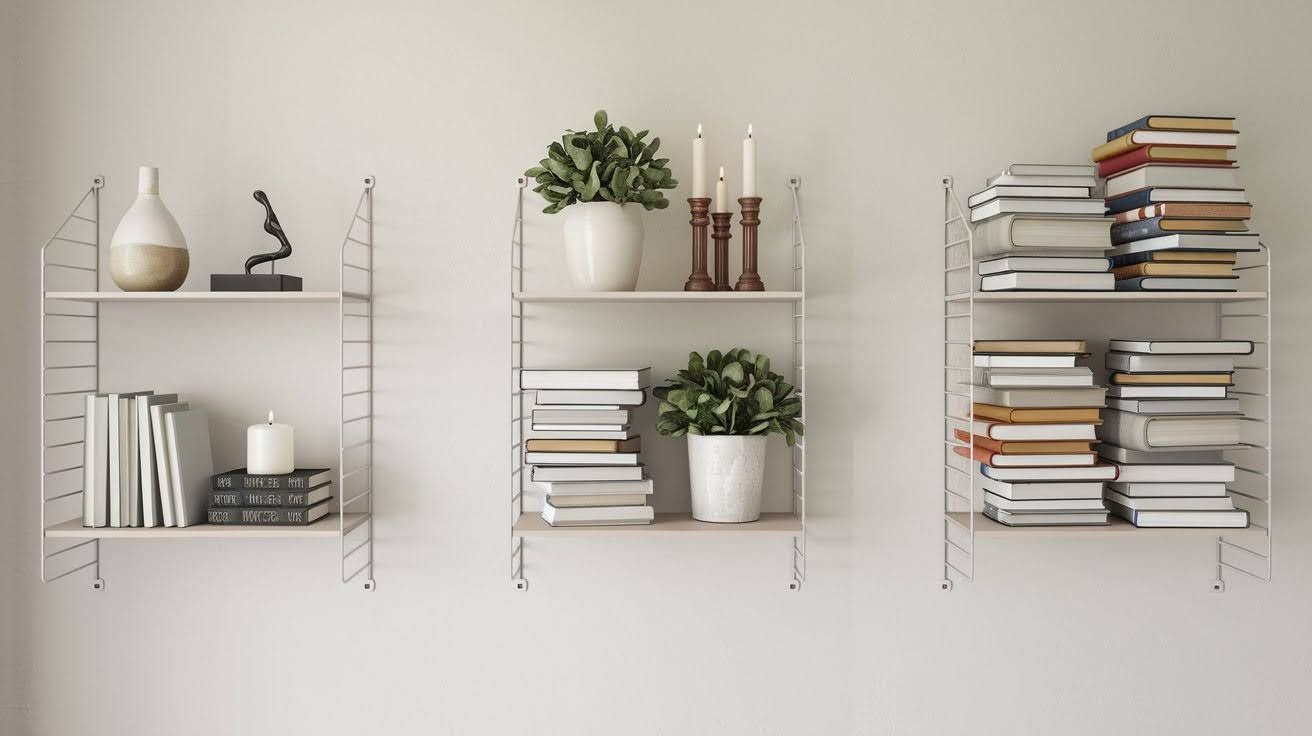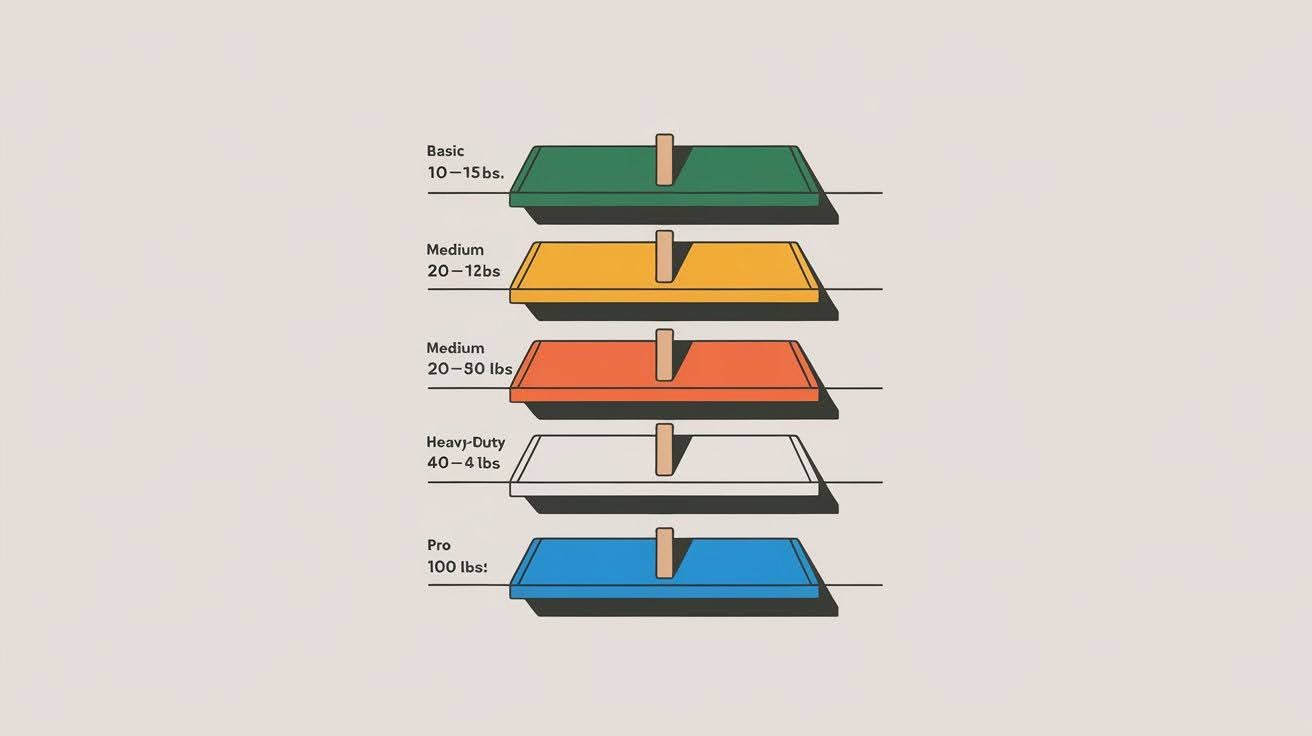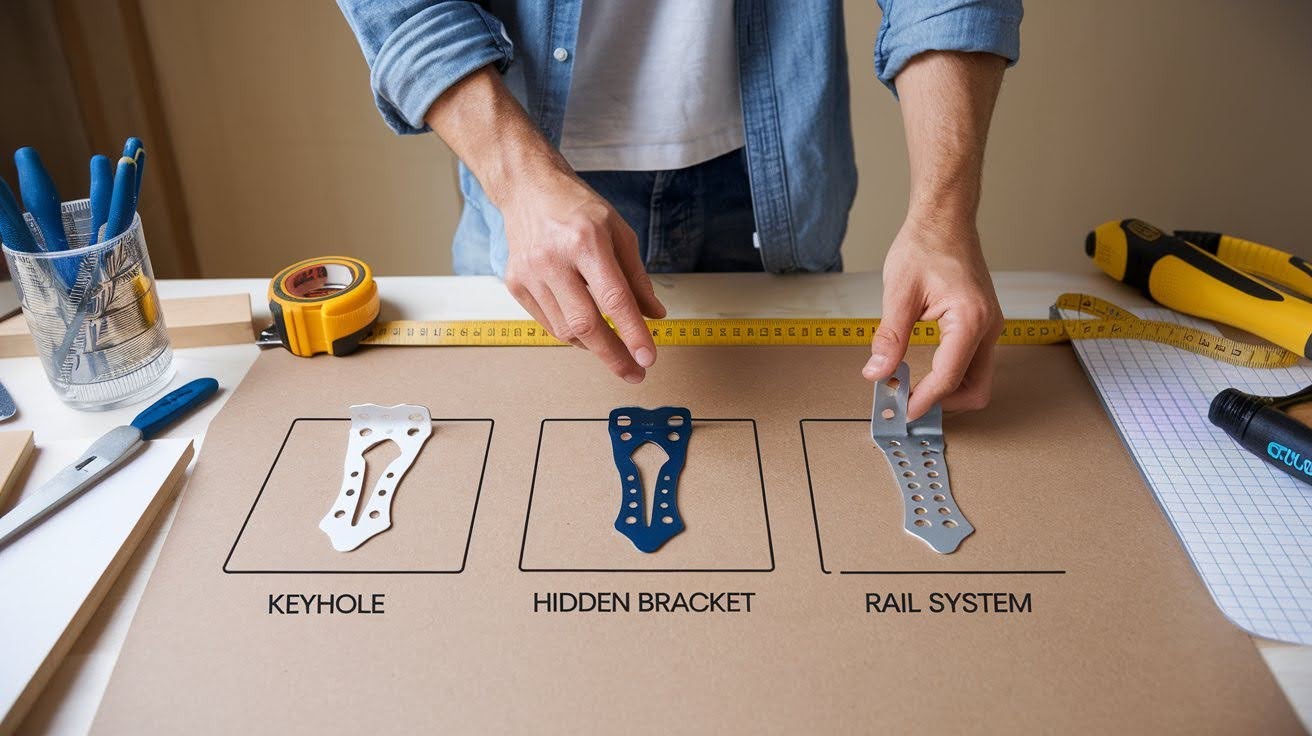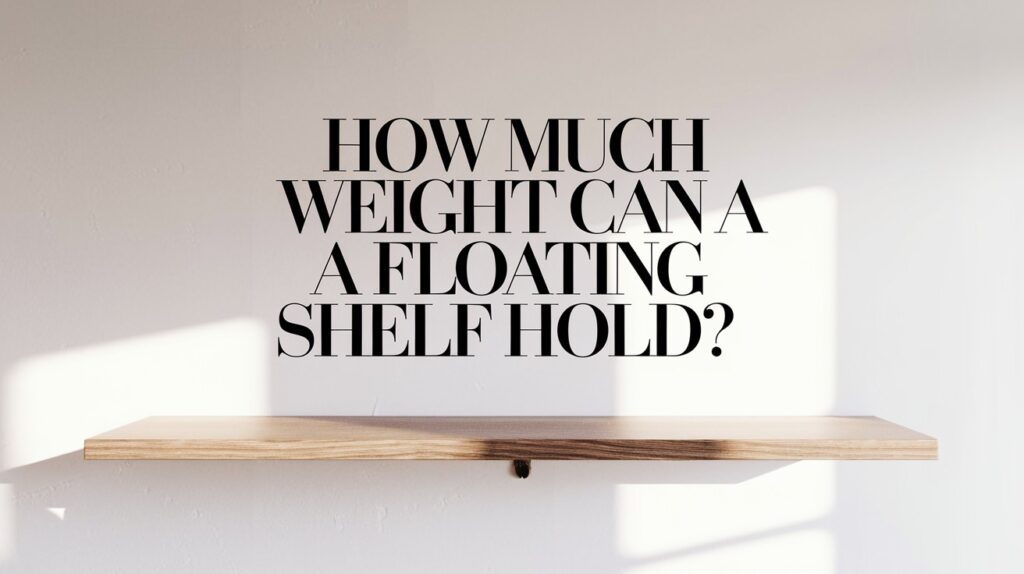Worried your floating shelf might crash down? I feel you.
I’ve installed over 200 floating shelves in my years as a handyman. I’ve also swept up the pieces when they fail.
Here’s what you’ll learn: real weight limits for different shelves, why your wall matters more than the shelf rating, and installation tricks that actually work.
You want straight answers about floating shelf weight capacity. Not sales pitches.
I’ll share what I’ve learned from testing, failures, and wins. This guide covers weight basics, choosing shelves, loading them safely, and avoiding disasters.
Your shelves will stay put. Your stuff will survive. Let’s fix this weight mystery right now.
Understanding Floating Shelf Weight Capacity

Most floating shelves hold between 10 and 80 pounds. That’s a huge range.
The cheap ones from big stores? Usually 10 to 20 pounds max. The heavy-duty systems? They can handle 50 to 80 pounds.
But here’s what catches people off guard. The shelf rating isn’t the whole story. Your wall is just as important.
I learned this when my neighbor’s shelf crashed. It was rated for 30 pounds. He loaded 25 pounds of books on it.
Still fell down. Why? He used drywall anchors in a hollow wall. Wrong choice.
Average Weight Capacity of Floating Shelves

Let me give you real numbers from my installs:
- Basic floating shelves: 10 to 15 pounds
- Medium shelves: 20 to 35 pounds
- Heavy-duty systems: 40 to 80 pounds
- Professional grade: 100 plus pounds.
These numbers assume you hit the wall studs perfectly. Most people skip the studs. They use anchors instead. That changes everything.
In hollow drywall with decent anchors? Cut those numbers in half.
In old plaster walls? Even less reliable.
Into solid wood studs? You can usually hit the full rating.
Factors That Affect Weight Limit in Real Homes
Your house isn’t a testing lab. Real conditions matter. Wall type makes or breaks your shelf setup.
Drywall Thickness
Standard half-inch drywall is weak. Shelf brackets can pull right through it.
Five-eighths-inch drywall works better. But it’s still not great for heavy stuff.
Stud Spacing and Quality
Most studs sit 16 inches apart. Some are 24 inches apart. Finding studs matters more than anything else. I use a magnetic stud finder. The cheap ones lie.
Old house studs? They’re not always where you expect. Sometimes they’re warped.
Wall Anchor Quality
This is huge. People use the plastic anchors that come with shelves. Don’t do that.
Toggle bolts work much better in hollow walls.
Snap toggles are my go-to choice for drywall.
How You Load the Weight
Where you put items matters a lot. All the weight on one end? The shelf will sag or pull out.
Spread it out evenly? Much better results.
Heavy items right over the brackets? That’s the sweet spot.
How to Choose the Right Floating Shelf for Your Needs

I get asked this question weekly. Here’s my simple process:
Step 1: Know Your Wall
Tap it with your knuckles. Hollow sound? You have drywall over studs. Solid thud? Could be plaster or concrete block. Much stronger.
Find your studs first. Everything depends on this step.
Step 2: Add Up Your Load
List everything going on the shelf. Weigh it if you can. Then add 20% more for safety.
Books are heavy. One foot of books weighs about 15 pounds. Picture frames usually weigh 1 to 3 pounds each.
Decorative stuff? You might be surprised how much it weighs.
Step 3: Pick Your Bracket System
Keyhole brackets work for light items. 10 to 15 pounds max. Hidden brackets handle more. Usually 20 to 40 pounds.
Rail systems work best for heavy loads. 50 plus pounds possible.
How to Maximize Weight Capacity Safely
Want to get the most from your shelf? I have some tricks.
Hit Those Studs
This matters most for heavy loads. Get a decent stud finder.
Can’t hit studs? Your weight limit drops fast.
Use Good Screws
The screws in the box are often junk.
I use 3-inch wood screws for studs. They bite deep into the wood.
For anchors? Match the screw size to what the anchor needs.
Install Level
Crooked shelves put stress in weird places. They fail sooner.
Use a level. Check it twice before drilling.
Think About Shelf Depth
Deeper shelves spread weight around better. They stay stable.
Shallow shelves work great for light stuff only.
Add Extra Support
For really heavy items? Put a third bracket in the middle.
The Corbels underneath look good and add strength too.
Real-Life Examples of Floating Shelf Load Capacity
Let me share what I’ve actually installed:
Kitchen Spice Shelf
24-inch shelf, 6 inches deep. Standard brackets into studs.
Load: 18 pounds of glass spice jars. Still perfect after 2 years.
Living Room Books
36-inch shelf, 8 inches deep. Heavy brackets into studs.
Load: 35 pounds of hardcover books. Rock solid.
Bathroom Storage
18-inch shelf, 5 inches deep. Toggle bolts in drywall only.
Load: 8 pounds of towels and bottles. Works great.
Garage Disaster
48-inch shelf, 10 inches deep. Used plastic anchors. Big mistake.
Load: 25 pounds of hand tools. Ripped out after one week.
Lesson: Never trust plastic anchors for real weight.
Common Mistakes People Make
I see these errors all the time:
- Trusting package ratings – The box says 30 pounds but that’s under perfect lab conditions. Your house isn’t perfect.
- Using cheap anchors – Those plastic things in the box are for hanging pictures, not real weight.
- Loading too fast – Don’t pile everything on at once. Add items slowly so you can feel if something’s going wrong.
- Forgetting about sag – Long shelves bend in the middle. Physics always wins. Use shorter shelves or add middle support.
- Never checking later – Shelves loosen over time with house vibration. Check your screws every few months.
Conclusion
You now know how much weight floating shelves really hold. Most handle 10 to 80 pounds. But your wall and installation method matter more than shelf ratings.
My top tip? Always hit studs when possible. Use quality anchors when you can’t. Start light and add weight slowly.
I’ve shared everything from years of installs. The successes and the crashes. Don’t guess with floating shelves. Follow these tips and your shelves will stay up.
Your books won’t crash. Your stuff won’t break.
Ready to install? Measure twice, drill once, and remember these weight rules. Got tricky questions about your setup? I love solving shelf problems.
Frequently Asked Questions
Can I put a 32-inch TV on a floating shelf?
Most TVs that size weigh 15 to 25 pounds. You need heavy brackets into studs. Regular floating shelves won’t work.
How do I know if my wall can handle heavy shelves?
Tap the wall and listen. Hollow sound means drywall over studs. Find studs with a good finder.
What happens if I put too much weight on my shelf?
The shelf sags first, then pulls away from the wall. I’ve seen shelves rip drywall chunks out.
Do floating shelves get weaker over time?
Yes, screws loosen with vibration and use. Check mounting hardware every few months and tighten loose screws.
Can I skip hitting studs completely?
You can, but weight limits drop a lot. Use quality toggle bolts or snap anchors instead of plastic ones.

